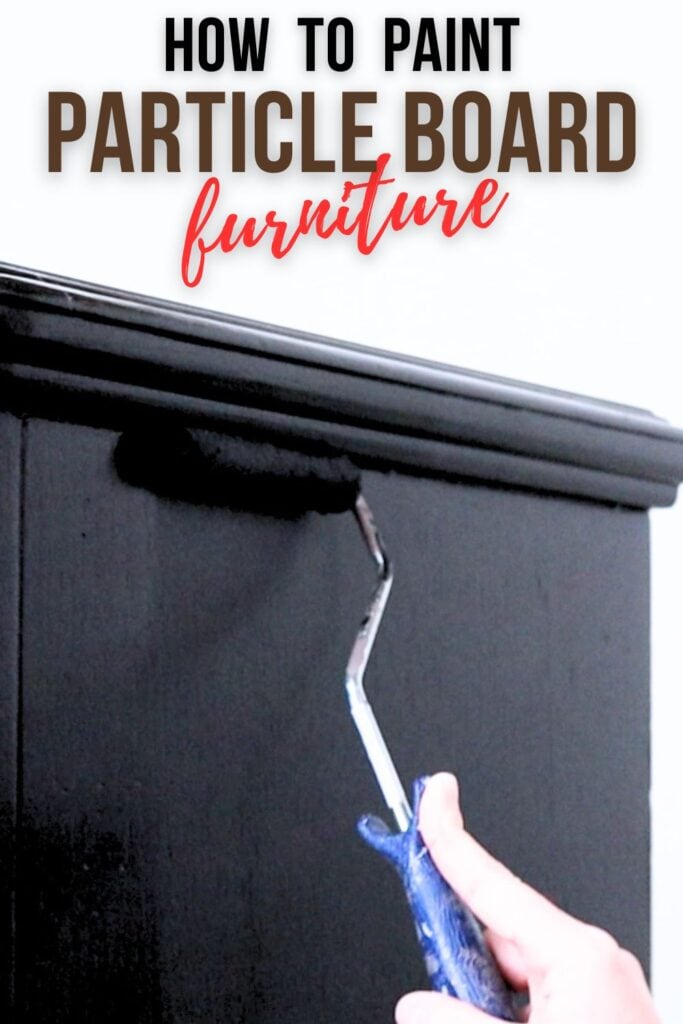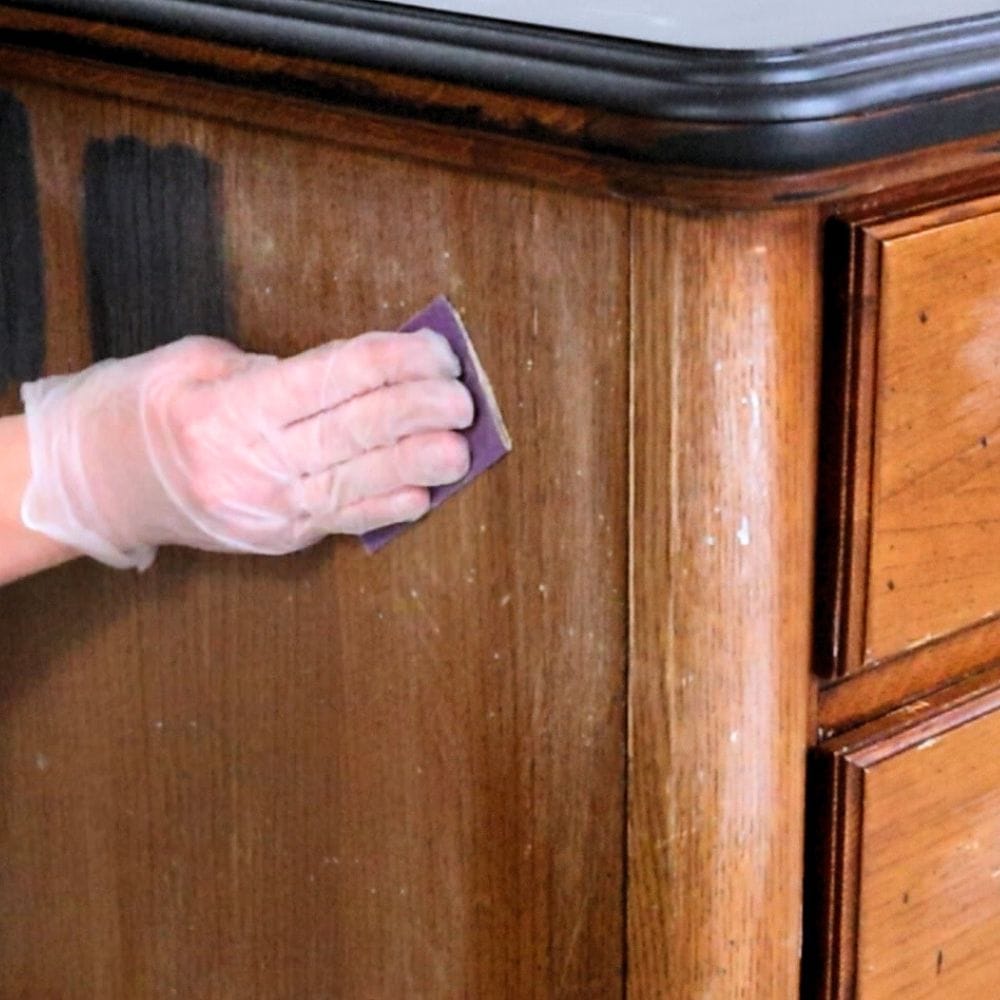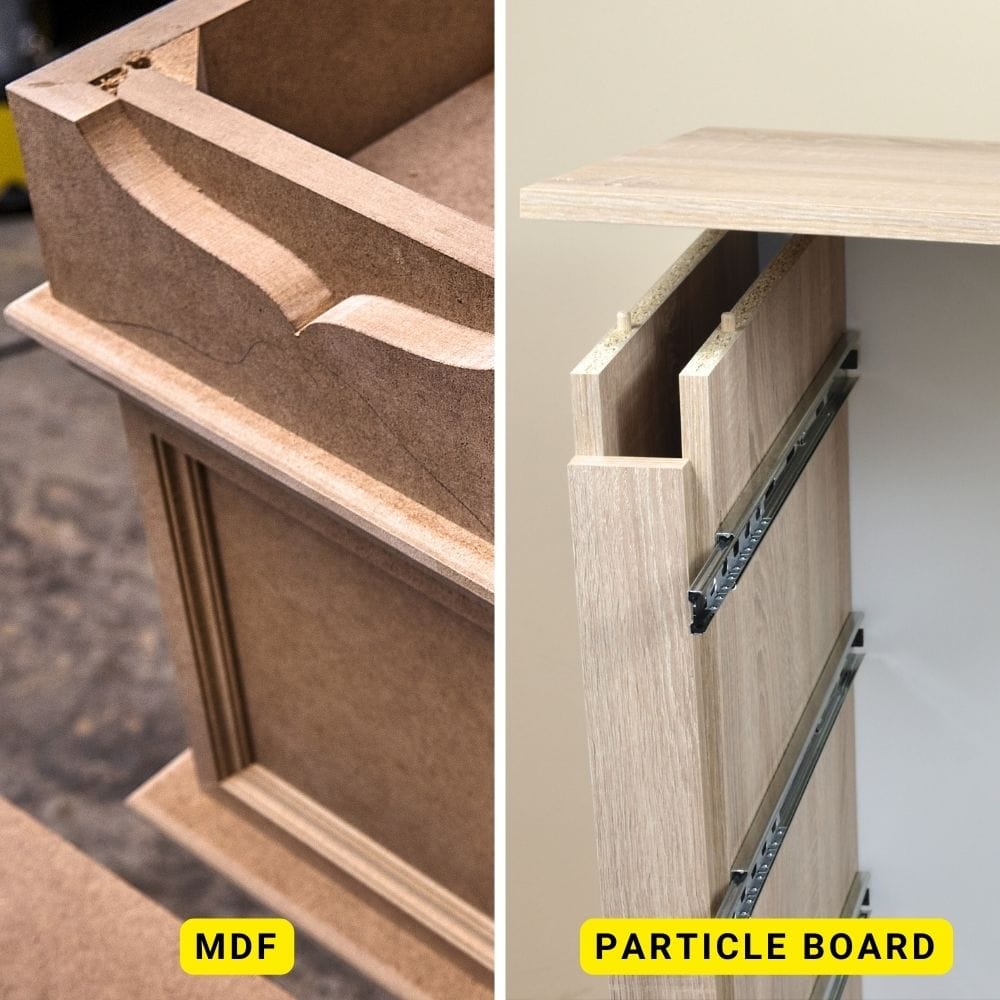How to Paint Particle Board Furniture
Particle board furniture is a popular choice for its affordability and lightweight design. However, you might feel a bit overwhelmed about painting it because of its unique material. We will walk you through everything you need to know about how to paint particle board furniture using various painting techniques for furniture.
Whether you are looking to give your old particle board furniture a fresh new look or want to customize a piece to match your decor, this guide will provide you with all the tips and tricks you need.

Particle board is a composite material made from wood chips, shavings, and sawdust that are bound together with glue or resin.
It is commonly used in furniture, shelving, and cabinets because it is more affordable than solid wood.
But here’s the thing – particle board can get a bit tricky because it tends to swell and become unstable when wet with water.
So how should you paint particle board furniture? Well, let’s first discuss the differences between particle board and MDF (medium-density fiberboard).
We’ll then walk you through how to paint particle board with both enamel and water-based paints. Let’s get started!
Supplies Used For Painting Particle Board Furniture
As an Amazon Associate, I earn from qualifying purchases. I also may earn from other qualifying purchases with other companies or get free product to review and use. All opinions are my own.
Particle Board vs MDF
Particle board and MDF (medium-density fiberboard) are both used as alternative materials to solid wood. They are commonly used to make affordable home décor pieces and furniture.
As mentioned above, particle board is made from wood chips, shavings, sawdust, and resin that has been compressed together, while MDF is made from a combination of fine wood fibers and glue.

Particle board is more affordable than MDF, making it a popular choice for budget-friendly projects. It is also lightweight and made with recycled materials, making it a more environmentally friendly option.
Also, particle board’s lifespan is longer than MDF, lasting up to 25 years compared to MDF’s 10-year lifespan.
Preparing Particle Board Furniture for Paint
Now for painting particle board furniture, the preparation process is key. Before you begin painting, make sure to clean the furniture thoroughly and allow it to dry completely.
Here’s our guide on how to clean furniture before painting to better guide you.
Make sure to also sand before painting furniture. This will guarantee that the paint adheres well to the furniture and gives a smooth finish. You can use 220-grit sandpaper for this step.
Here’s a complete guide on sanding for paint prep where we share the basics of sandpaper grits and comparison between sanding by hand and with a power sander.
It’s also important to address any damage as soon as possible to prevent further issues. Here’s our guide on how to repair damaged particle board furniture.

Next, it’s important to prime the particle board furniture before painting. You have to use an oil-based or shellac-based primer.
Yes, remember not to use a water-based primer because it will cause the particle board to expand when water seeps in.
Once you are done with preparing furniture for painting, you are now ready to paint!
Want to use spray paint for particle board but hesitant about it? Check out our blog post about can you spray paint particle board?
How to paint particle board furniture with enamel paint
Enamel paint has an oil base, which makes it a perfect match for painting particle board furniture. The finish is durable and will hold up well against everyday wear and tear.
Plus, it will give your furniture a glossy and professional-looking finish.

It’s important to apply thin coats of enamel paint to avoid leaving brush marks or drips. Here is our list of the best paint brushes for painting furniture for high-quality options for the job.
If you’re worried about brush strokes or uneven coverage, consider using a paint sprayer instead of a brush for better coverage and smoother results.
Check out the best HVLP paint sprayers for furniture here if you’re interested in this option. Allow the paint to dry completely before handling or using your particle board furniture again.
We also have a post for everything you need to know about painting furniture with enamel paint!
How to paint particle board furniture with water-based paint
If you prefer using water-based paints like chalk paint, acrylic paint, or mineral paint for your particle board furniture, that is still fine!
But again, you have to make sure that you prime the furniture first using an oil-based or shellac-based primer.
You don’t want your particle board furniture to swell because of the water in these types of paint for furniture.

The advantage of using water-based paints is that they are non-toxic and easy to clean up with soap and water.
They also tend to dry faster than oil-based paints, allowing for a quicker turnaround time on your project.
Water-based paints also come in a wide range of finishes, from flat to satin to semi-gloss, giving you more options for your desired look.
When painting with water-based paints, it’s important to use a good quality paintbrush or roller to avoid leaving brush marks or streaks.
You can also learn tips and tricks on how to paint furniture without brush marks for a smoother finish.
Apply thin coats and allow each coat to dry completely before applying another.
Can I skip priming and directly paint particle board furniture?
While it may be tempting to skip the priming step, we highly recommend against it.
Priming is an important step in preparing particle board furniture for painting, as it helps the paint adhere better and prevents any water damage.
If you don’t want a poor finish and furniture swelling, it’s best not to take any chances and prime your particle board.
Even if it may seem like an extra step, priming is not something you can skip for a successful painting project on particle board furniture.
Which is better, particle board or MDF?
If you want something that’s more budget-friendly and lasts longer, then particle board might be the way to go.
But if you’re after a denser, stronger material with a smoother finish, then MDF could be the better choice. It all comes down to your specific needs and preferences!

Another factor to consider is the type of project you are working on. While particle board is great for budget-friendly projects, it may not hold up well in high-moisture areas.
MDF, on the other hand, is more resistant to moisture and can be a better option for furniture that will be exposed to humidity or water.
Ultimately, both materials have their own unique strengths and it’s important to assess your needs before choosing which one to use.
Painting particle board furniture is an easy and affordable way to give your home decor a new look. Whether you choose enamel or water-based paints, make sure to properly prepare your furniture by cleaning, sanding, and priming it before painting.
And don’t ever forget to use oil-based or shellac-based primers to avoid any swelling or instability in the particle board!
More furniture Painting Tips
- How to Paint Stripes on a Wall Without Bleeding
- How to Whitewash Furniture
- How To Paint And Distress Fake Wood Furniture
- How to Paint Wooden Furniture
- Best Way to Paint Furniture
Follow us on YouTube to get more tips for painting furniture.
Or share your project with us on our Facebook Group and be part of our community. See you there!



